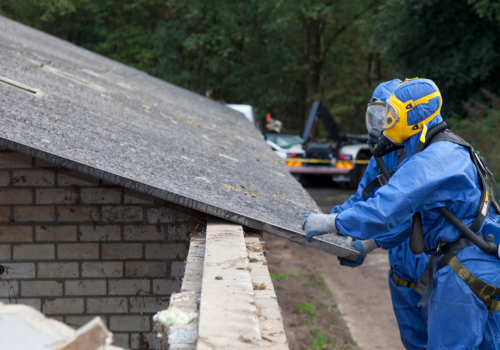Handling hazardous materials during demolition is a critical aspect of ensuring safety and regulatory compliance. As buildings are torn down, they can expose a range of dangerous substances, from asbestos and lead to various chemicals, all of which require careful management to prevent health risks and environmental contamination. Proper handling is not only essential for protecting workers and the public but also for adhering to legal requirements and avoiding costly fines. In this blog, we’ll guide you through the essential steps for managing hazardous materials during demolition projects. From pre-demolition inspections and risk assessments to safe removal techniques and disposal procedures, we’ll cover everything you need to know to tackle these challenges effectively. By following these best practices, you can ensure a safer demolition process and contribute to a more sustainable and compliant industry.
Demolition projects often involve more than just tearing down structures; they can also require careful handling of hazardous materials. These materials, which might pose health and safety risks if not managed properly, can be hidden within older buildings or be a part of the demolition debris. Understanding what hazardous materials might be present and how to handle them safely is crucial for ensuring the well-being of workers, the environment, and the community. Here are eight key hazardous materials commonly encountered in demolition projects:
Asbestos is a fibrous mineral that was widely used in construction for its fire-resistant properties. It can be found in insulation, floor tiles, roofing materials, and more. When disturbed, asbestos fibers can become airborne and, if inhaled, may lead to serious respiratory diseases such as asbestosis, lung cancer, and mesothelioma. Handling asbestos requires specialized training, proper protective gear, and strict adherence to regulations for safe removal and disposal.
Lead-based paint was commonly used in homes and buildings before being banned in many places due to its toxic effects. Lead exposure can cause severe health issues, especially in children, including developmental and neurological problems. During demolition, lead dust and chips can be released, so it’s crucial to use proper containment methods, personal protective equipment (PPE), and follow guidelines for safe removal and cleanup.

PCBs are chemicals that were used in electrical equipment, sealants, and paints before their environmental and health risks were fully understood. They are persistent in the environment and can accumulate in the food chain. PCBs can cause cancer and other health problems. Special procedures are required to handle, store, and dispose of PCB-containing materials to prevent environmental contamination.
Mercury can be found in old thermostats, fluorescent light bulbs, and some electrical devices. It is a potent neurotoxin that poses risks to both humans and wildlife. When these items are disturbed or broken during demolition, mercury can be released into the environment. Safe handling practices, including proper containment and disposal methods, are essential to prevent mercury exposure.
Chlorinated solvents, such as trichloroethylene (TCE) and perchloroethylene (PCE), are used in various industrial applications, including cleaning and degreasing. These chemicals can be found in old pipes, equipment, and building materials. They are harmful if inhaled or ingested and can cause long-term health issues. Handling these solvents requires careful storage, containment, and disposal procedures to avoid environmental contamination.
When undertaking a demolition project, one of the most critical steps is identifying hazardous materials that might be present in the building. These materials can pose significant health risks and environmental concerns if not properly managed. Being aware of the common hazardous substances found in older buildings helps ensure that appropriate safety measures and regulatory compliance are in place before the demolition begins. Here are eight common hazardous materials often found in buildings:
Asbestos is a naturally occurring mineral that was extensively used in construction materials for its heat resistance and insulating properties. It can be found in a variety of building materials such as insulation, floor tiles, roofing shingles, and pipe coverings. Asbestos fibers are dangerous when inhaled, as they can cause serious lung conditions, including asbestosis and mesothelioma. Identifying asbestos typically involves sampling and laboratory testing, and its removal must be handled by certified professionals following strict safety protocols.
Lead-based paint was commonly used in buildings prior to the 1970s due to its durability and color retention. Lead is highly toxic, especially to young children and pregnant women, and can cause developmental and neurological impairments. Lead-based paint can be found on walls, doors, windows, and trim. Identification involves testing surfaces with lead test kits or lab analysis, and any demolition involving lead-based paint requires appropriate containment and disposal measures.
PCBs are synthetic chemicals that were used in electrical equipment, sealants, and paints before their environmental and health risks were fully understood. They can be found in old transformers, capacitors, and certain types of caulking. PCBs are persistent environmental pollutants and can cause cancer and other health problems. Identification typically involves sampling and chemical analysis, and handling PCBs requires special procedures to prevent contamination.
Mercury can be found in older buildings in items such as fluorescent light bulbs, thermostats, and certain electrical switches. It is a toxic heavy metal that can cause serious health issues, including neurological damage. When these items are broken or improperly handled, mercury can be released into the environment. Proper identification involves checking for items known to contain mercury and managing them with appropriate containment and disposal methods.
Chlorinated solvents, such as trichloroethylene (TCE) and perchloroethylene (PCE), are chemicals used in various industrial processes, including degreasing and cleaning. These solvents can be present in old machinery, pipes, or building materials. They are hazardous due to their potential to cause cancer and other health effects. Identifying chlorinated solvents often involves testing materials or checking equipment labels, and handling requires proper safety measures to prevent exposure and contamination.
Managing hazardous materials during demolition is not only a matter of safety but also a legal obligation. Compliance with regulations ensures that hazardous substances are handled, removed, and disposed of properly to protect public health and the environment. Understanding the relevant legal and regulatory requirements is essential for avoiding penalties and ensuring safe demolition practices.
Handling hazardous materials during demolition requires meticulous planning, adherence to safety regulations, and proper disposal techniques. Ensuring that you are equipped with the right knowledge and tools can protect both your team and the environment from potential hazards. Remember to always consult with professionals and adhere to local regulations to ensure a safe and efficient demolition process.
For expert assistance with hazardous materials during your demolition project, JUNKAHAULICS in Raleigh is here to help. Our team is dedicated to providing top-notch service and ensuring compliance with all safety standards. Contact us today at (910) 403-3616 or visit us at 4801 Glenwood Ave, Suite 200, Raleigh, NC 27612. Let us handle the complexities so you can focus on your project with peace of mind.


JUNKAHAULICS